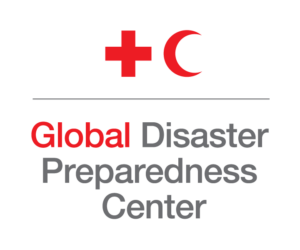Ethics in Technology
Addressing Humanitarian Accountability Within Humanitarian Tech
The humanitarian field is making strides to bring greater accountability to humanitarian principles in tech. Largely, with a focus on "ethics," we have gained traction with creators of humanitarian information & communication technologies (HICTs) in addressing hard issues around vulnerability of information and privacy of data. Yet, this still doesn't reach the level of evaluation or criteria for our principles that we expect within our core work as we deliver services to vulnerable populations. How might we raise HICTs to the next level of humanitarian accountability in design and development?
Do you have examples where you negotiated a breakthrough with a tech creator to bring greater inclusion or alignment with the way we work in order to uphold our human rights and humanitarian values? Or, in contrast, examples of where doing so just seemed too far to reach?
We want to know more! We are seeking such examples to help us map future innovation efforts for bringing greater accountability to our values into the design and development of technology. Please join our study below!
Take our survey and share with us your examples

What is the humanitarian socio-technical gap (HSTG)?
The Socio-Technical Gap (Ackerman, 2000) is a term used in tech design and development which refers to a chasm that exists between the “socio-” and the “ –technical.”
That is, the gap between:

For Humanitarian Technology, this gap is a bit wider on both ends:
- First, tech creators don’t actually know what they need to support humanitarians socially. There is a lack of adequate understanding of the ways humanitarians are effectively translating humanitarian accountability into the details of their work with communities on the ground. That’s something, we, as the expert practitioners, have to better translate for tech creators before we can expect it to be adequately assessed within tech creation.
- Second, technically speaking, current technology design and development methods are not meant to accommodate what is needed to create ICTs that can be accountable to our humanitarian values. Traditional development methods are, in fact, explicitly designed to be a-moral (or, to not judge social-ethical needs.) We hope to explore, in tandem with tech innovators, alternative methods and measures for building tech for uniquely moral types of work.
Our focus is on interactions between technology creators and RC/RC practitioners to resolve tensions that emerge within [what Mays refers to as] the humanitarian socio-technical gap (HSTG) between what humanitarians desire to accomplish socially and technology creators are able to accomplish technically.
- Dr. Robin E. Mays, University of Washington & Senior Research Scientist at the Global Disaster Preparedness Center
How can we close the gap?

Identification
This starts with better identifying the ways we create successful outcomes in our work as humanitarians. Studies such as Valuing What Works provide a framework for considering a different kind of "effective" and information requirements than current traditions assume. Here, the Wheel of Successful Practice begins to provide the more critical socio-requirements needed in the design of HICTs.

Engagement
Next, we must engage the cooperative work of translating our social requirements further into technical requirements for tech creators, with tech creators. Here is one study where we sought to do this.

Partnership and co-creation
Finally, together with tech partners, we pursue the innovative work of co-creating technology development methods that can meet these "ethical" socio-requirements, and establish a formal assessment of HICTs on these critical aspects of humanitarian accountability.
About our project
Through a three-year award from the National Science Foundation’s program on Cultivating Cultures for Ethical STEM (Science, Technology, Engineering, and Mathematics), Ethics in Technology is a collaborative research project between the Red Cross and Red Crescent Movement and University of Washington, aimed at aligning information technology development with the ethical humanitarian culture.
As humanitarian ICT (HICT) becomes more ubiquitous in the humanitarian space, it has raised a host of new and complicated, ethical, moral, and rights-based questions for design and development. This collaboration with the University of Washington’s Department of Human-Centered Design & Engineering (HCDE), introduces us to new academic and applied insights and approaches in the areas of socio-technical studies and human-centered design that are helping us to recognize and better address the cultural gap between our technology partners’ methods and our non-negotiable humanitarian ethos. This research brings a unique and valuable opportunity for incorporating practice-driven learning across STEM fields, expanding STEM’s ability to accommodate social norms broadly.
Led by Dr. Mays, the research team brings together humanitarians, ICT creators, and STEM researchers across the globe to pursue innovations for technological accountability to humanitarian values.
Research question 1
Research question 2
How are humanitarian ethical imperatives addressed in the development, design, implementation, and use of HICT?
Research Plan
Learn more
Ask The Team a question:


